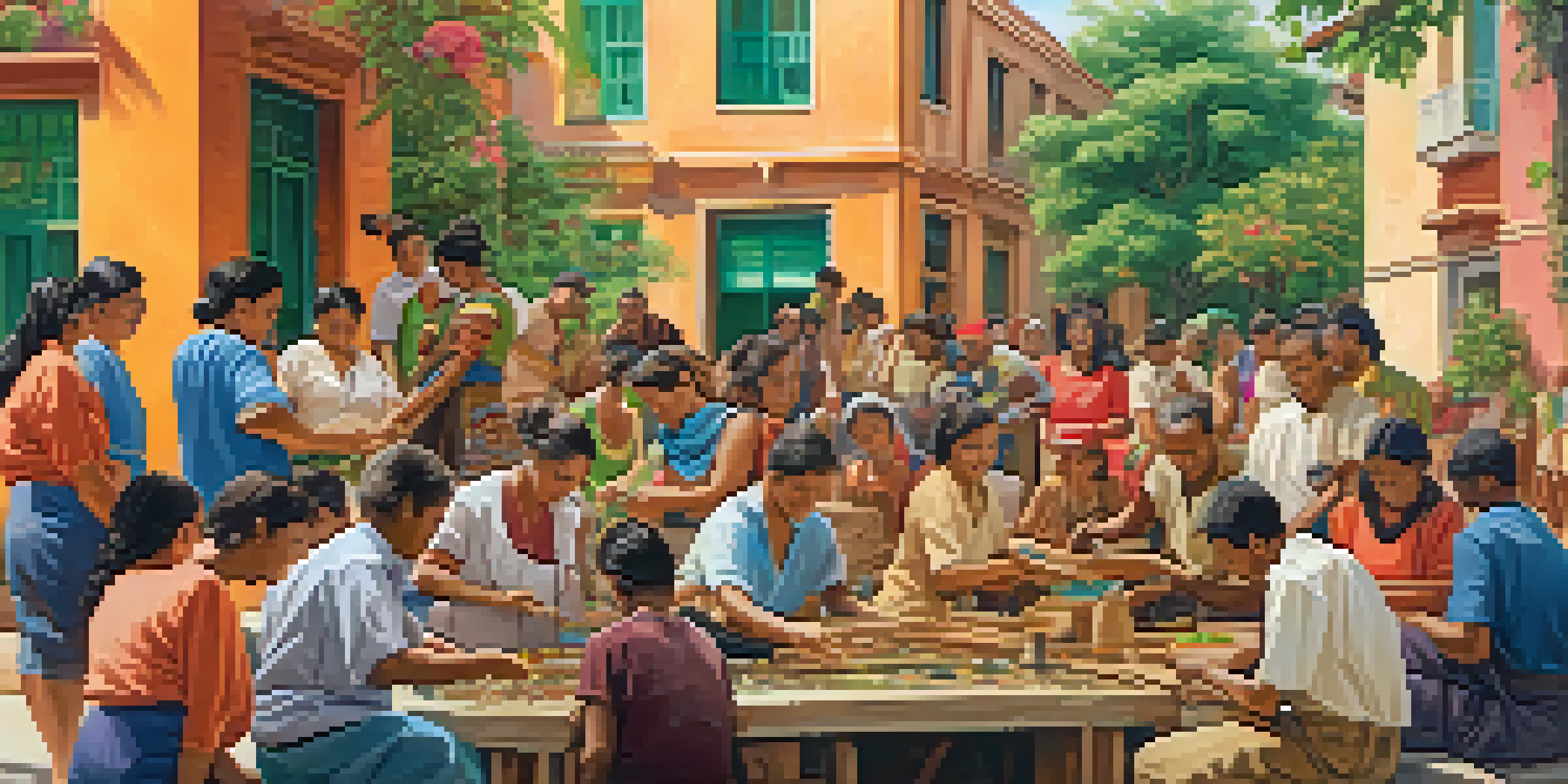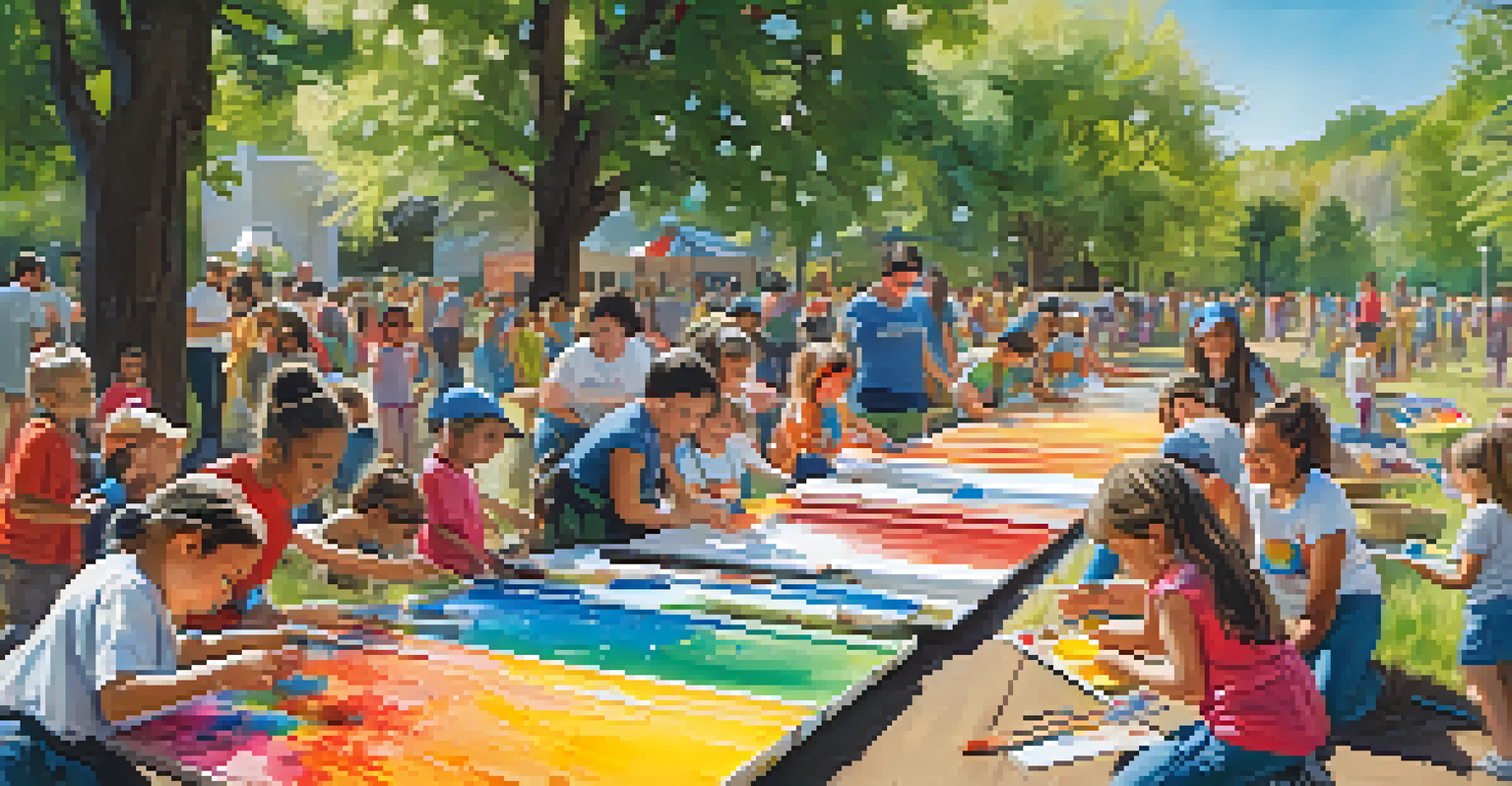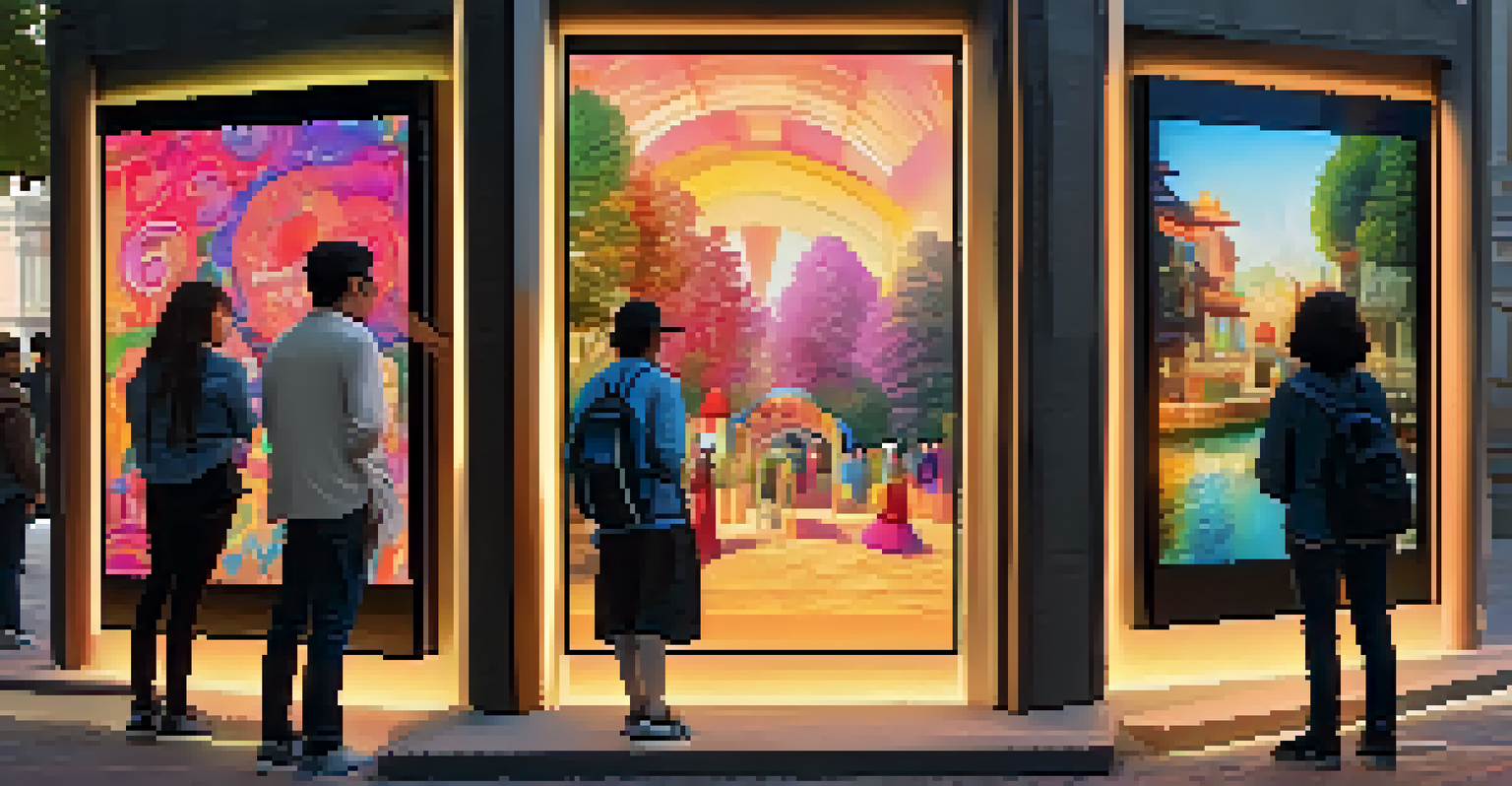The Role of Community Artists in Shaping Cultural Identity

Understanding Cultural Identity in Communities
Cultural identity is the essence of a community, encompassing shared values, traditions, and experiences. It's shaped by history, language, and the arts, creating a unique tapestry that reflects who the people are. By understanding cultural identity, we can appreciate the rich diversity within communities and the role of artists in expressing these identities.
Art is the most beautiful of all lies.
Artists often act as mirrors to their communities, highlighting both the beauty and struggles they face. Through their work, they provide a voice to those who may feel unheard, helping to foster a sense of belonging. This connection between art and identity is a powerful tool for community cohesion and pride.
Moreover, cultural identity is dynamic and ever-evolving. As communities change, so too does their cultural expression, making the role of community artists critical in documenting and shaping these transformations.
The Impact of Community Artists on Local Culture
Community artists play a vital role in enriching local culture by creating art that resonates with the people. Their work often draws from local stories, traditions, and social issues, making art a relevant part of everyday life. This connection fosters a deeper appreciation for the community's heritage and promotes cultural continuity.

For example, murals depicting historical events or significant local figures can educate residents and visitors alike. They not only beautify public spaces but also serve as conversation starters, encouraging dialogue about the community's past and future. This interaction can strengthen community ties and promote a shared sense of identity.
Cultural Identity Shapes Communities
Cultural identity reflects shared values and experiences, enhancing community cohesion and pride.
Furthermore, community artists often collaborate with local organizations, schools, and cultural institutions. These partnerships create opportunities for workshops, exhibitions, and performances that engage diverse audiences and invite participation, thus weaving art into the fabric of community life.
Fostering Inclusivity Through Artistic Expression
Art has the unique ability to bridge divides and foster inclusivity within communities. Community artists often focus on representing marginalized voices, allowing for a broader spectrum of identity to be acknowledged and celebrated. This inclusivity is essential for creating a sense of belonging for everyone.
The arts are not a reflection of society; they are a lens through which we can see it more clearly.
Projects that involve diverse groups—such as intergenerational art collaborations or cultural exchange programs—can break down barriers and encourage understanding. By bringing people together through shared creative experiences, artists help cultivate empathy and respect among community members.
Additionally, inclusive artistic initiatives can empower individuals to share their own stories, further enhancing the community's cultural narrative. When everyone feels represented, the resulting cultural identity becomes richer and more vibrant.
Preserving Heritage Through Community Art Projects
Community artists are often pivotal in preserving cultural heritage through their creative endeavors. By documenting traditional practices, languages, and stories, they help ensure that these elements are not lost to time. Their work can spark interest in younger generations, encouraging them to connect with their roots.
For instance, artists might create visual narratives that explore indigenous histories or traditional craftsmanship. Such projects not only celebrate the past but also inspire future generations to take pride in their heritage. This preservation work is crucial for sustaining cultural identity amid globalization and modernization.
Art Fosters Inclusivity and Expression
Community artists amplify marginalized voices, creating inclusive spaces that celebrate diverse identities.
Moreover, community art projects can be a platform for sharing knowledge and skills. Workshops that teach traditional techniques not only pass on valuable cultural practices but also strengthen community bonds through shared learning experiences.
The Role of Technology in Community Art
In today’s digital age, technology plays a transformative role in community art. Artists are utilizing social media, digital platforms, and interactive tools to reach wider audiences and engage community members. This accessibility helps to democratize art and cultural expression.
For example, virtual galleries and online workshops can connect artists with individuals who may not typically have access to cultural events. This technology-driven approach allows for greater participation, enabling more voices to contribute to the community's cultural identity.
Additionally, technology can facilitate collaboration across geographical boundaries. Artists from different cultures can come together in virtual spaces, sharing ideas, techniques, and perspectives that enrich their local art scenes and foster global cultural exchange.
Challenges Faced by Community Artists
Despite their crucial role, community artists often face numerous challenges. Funding constraints, lack of support, and limited access to resources can hinder their ability to create and share their work. These obstacles can be particularly pronounced in underserved communities where arts funding is often the first to be cut.
Moreover, community artists may struggle with recognition and validation of their contributions. When art is viewed solely through a commercial lens, the societal value of community art can be overlooked, making it harder for artists to sustain their practice.
Technology Transforms Community Art
Digital platforms are expanding access to art, allowing broader participation and collaboration across cultures.
Navigating these challenges requires resilience and community support. By advocating for the importance of community art and investing in local artists, communities can ensure that their cultural identities continue to thrive.
The Future of Community Artists and Cultural Identity
Looking ahead, the role of community artists in shaping cultural identity will only grow more significant. As societal issues like climate change, migration, and social justice become more prominent, artists will be essential in bringing these themes to the forefront of cultural conversations. Their ability to reflect and respond to contemporary challenges ensures that art remains relevant.
Additionally, as communities become more diverse, artists will be vital in weaving together different cultural narratives. This blending of traditions and stories can create a more inclusive and multifaceted cultural identity that reflects the realities of modern life.

Ultimately, the future of community artists lies in their capacity to inspire, educate, and unite. By fostering collaboration and supporting local talent, communities can continue to celebrate their unique identities while embracing the beauty of diversity.